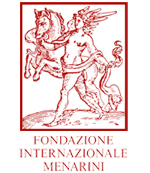
Press Release
Sudden cardiac death
Therapies and defibrillators for reducing the mortality rate
Florence, 22 October 2015 – People with cardiomyopathies (primitive diseases of the myocardium) constitute an ever-increasing percentage of patients who visit the cardiologist. These diseases, which directly affect the heart muscle, are difficult to manage despite the rapid progress that has been made in this sector. On the other hand, few other cardiology areas have witnessed such a significant contribution by scientific research in the understanding of the physiopathology and clinical management, thus giving a glimpse future developments.
One of the most well known is Hypertrophic Cardiomyopathy, which is responsible for numerous cases of sudden death among young people. “Hypertrophic Cardiomyopathy is a disease characterised by a pathological thickening of the walls of the heart, often with a familiar trend”, explains Franco Cecchi, Consultant of the Genetic Arrhythmias and Cardiomyopathies Centre of the Istituto Auxologico IRCCS Milan, formerly Associate Professor of Cardiology of the University of Florence and head of the reference Regional Cardiomyopathy Centre. “At its origin are errors in the genetic code of the contractile proteins of the heart. Sudden death is the most serious complication, even though fortunately not the most frequent, still causing about five hundred cases a year in Italy”.
Patients with Cardiomyopathy are estimated to be about three per thousand in the general population. Hypertrophic Cardiomyopathy is the most widespread genetically-based heart disease: it is estimated that approximately two out of every thousand people suffer from it, equal to one hundred and ten thousand in Italy. But only one third of them are aware of having the disease because they can remain for a long time without any symptoms. “The people with Cardiomyopathy therefore represent an increasingly wider spectrum of patients who visit the cardiologist“, adds Iacopo Olivotto, head of the reference Regional Cardiomyopathy Centre, Heart and Vascular Department of the Careggi University Hospital of Florence. “However, even though this condition only attracts the attention of the public on occasion of sudden deaths during sporting activities, it actually affects a wide cross-section of the population”.
Cecchi and Olivotto are the chairmen of the event that will be held in Florence from 22 to 24 October: the third “Florence International Symposium on Advances in Cardiomyopathies” which is also the twelfth Meeting of the Myocardial and Pericardial diseases Working Group of the European Society of Cardiology. This event is being presented by the Department of Clinical and Experimental Medicine of the University of Florence and the Fondazione A.R.Card Onlus, and promoted by the Fondazione Internazionale Menarini.
“Today we know that in many cases this class of diseases of the heart muscle is compatible with a normal lifestyle. Nevertheless, just on a third of these patients have significant complications such as heart failure, syncope, stroke, and as mentioned above, sudden death. For this reason it is important to obtain an early and accurate diagnosis”, continues Cecchi. “Consequently, in addition to a visit and the common cardiac exams, the use of advanced technologies is also advocated, such as Magnetic resonance with contrast medium, as well as a genetic analysis of the genes that are liable to cause cardiomyopathies. In fact, it is now possible to identify the genetic mutation. “In more than half the cases it is possible to discover the mutation responsible for this disease” states Olivotto. “Today we can conduct genetic analysis with new diagnostic methods (such as NGS - next generation sequencing) that allow for the simultaneous examination of more than one hundred genes that are potentially responsible for cardiomyopathies”.
Once the genetic mutation has been identified, it must also be verified in the family members who give their consent to be examined. This also enables early diagnosis in other members of the same family who could be affected by this condition, so that they can change their lifestyle or follow therapies aimed at limiting the adverse events. “A modern therapeutic approach to Hypertrophic Cardiomyopathy is mainly based on several types of drugs that have demonstrated their effectiveness in reducing the symptoms of breathlessness and angina pain, and in controlling the arrhythmias”, continues Cecchi. “In patients in whom Hypertrophic Cardiomyopathy gives rise to obstructions to the outflow of blood from the left ventricle it may be necessary to resort to cardiac unblocking surgery known as ‘myectomy’”.
In patients with life-threatening arrhythmias or a high risk of sudden death, there is now the possibility of effective prevention thanks to highly-evolved defibrillator implants. “The introduction of the implantable defibrillator in clinical practice over the last 25 years has made a lifesaving treatment possible for the primary and secondary prevention of sudden cardiac death for millions of patients all over the world. Nevertheless, the use of transvenous catheters often gives rise to potential complications, while the use of the new totally subcutaneous devices may be able to overcome these adverse events”, concludes Olivotto.
Download the PDF of the Press Release:
Download PDF